The main task of any battery is to provide voltage and current to a circuit. Depending on the battery type and size, voltage and maximum capacity can vary. The most common battery type used in household electronics is the alkaline battery, which can be found in almost any store. This type of battery can be produced in a wide range of sizes, as illustrated in the image below.
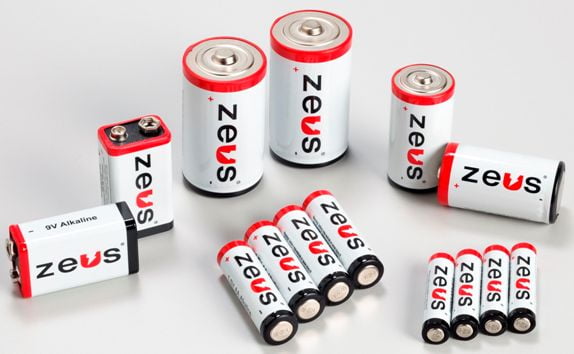
APPLICATIONS
Toys, flashlights, audio devices, scales, blood pressure meters…
VOLTAGE
Rated voltage 1.5V, but voltage can vary from 1.55V up to 1.65V. There is also 9V version.
TEMPERATURE
Alkaline batteries are best suited to operate in temperature range from -10°C up to +45°C.
SHELF LIFE
Determines how much capacity is lost in battery cell after manufacturing while being stored and not used. For alkaline batteries shelf life time is usually five years. Shelf time is influenced by temperature and humidity. Higher temperature and humidity will decrease shelf life. Typically for sotrage at 20°C and not above 65% of relative humidity battery will lose 3% of capacity per year.
As seen on image bellow after 5 years at 20°C battery capacity is at 80%, but capacity drastically reduces at storage temperature of 30°C and only slighlty above 40% of capacity is left if battery is used in medium drain device.
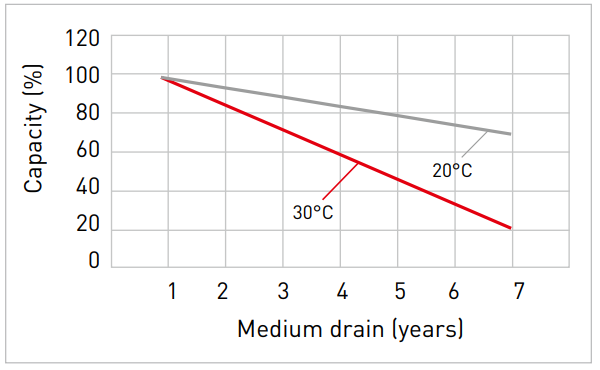
CUT-OFF VOLTAGE
Recommended cut-off voltage for alkaline batteries is 0.8V. This is minimum voltage during load. It is not recommended to use battery when voltage is below this level. For 9V battery cut off voltage is 4.8V. Draining battery below cut-off voltage increases risk of creating high pressure inside battery.
BATTERY DIMENSIONS AND DESIGNATION
There are few alkaline battery dimensions stated in table below. Simply said bigger battery have more capacity to drive same device for longer time. All different battery sizes have special designations which can be based on few standards for example: IEC (international electrotechnical commission), ANSI (American National Standards Institute) and JIS (Japan Industrial Standard).
| IEC | LR20 | LR14 | LR6 | LR03 | 6LR61 |
| ANSI | D | C | AA | AAA | 9V |
| JIS | AM-1 | AM-2 | AM-3 | AM-4 | 6AM-6 |
| RADIUS (mm) | 32.3 – 34.2 | 24.9 – 26.2 | 13.5 – 14.5 | 9.5 – 10.5 | Rectangular |
| LENGTH (mm) | 61.5 | 50 | 50.5 | 44.5 | 48.5 x 26.5 x 17.5 |
The AA battery is one of the most common sizes of alkaline batteries in use. Like most alkaline batteries, its rated voltage is 1.5V. Detailed standardized battery dimensions can be seen in the picture below.
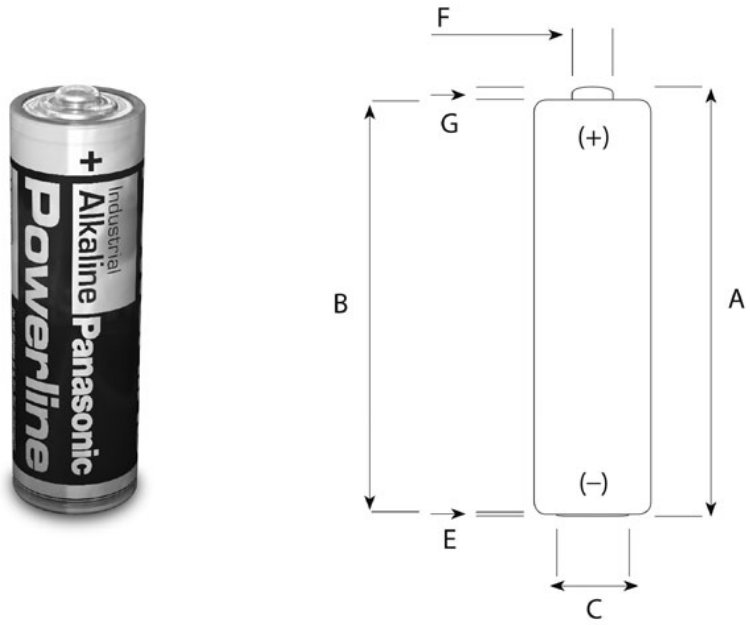
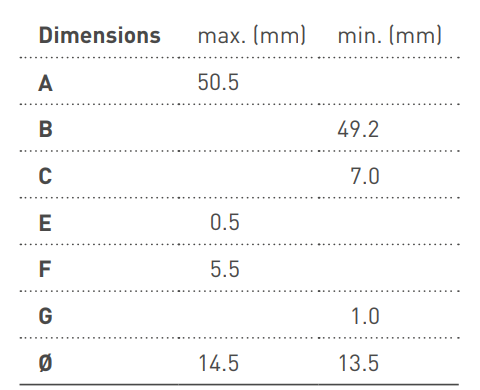
ALKALINE BATTERY CAPACITY (LR6 / AA example)
Usually expressed in mAh – milliampere-hour. This roughly means that battery which have 2500mAh capacity can supply device with 100mA curent load in duration of 25 hours.
This equation seems simple for constant load draw but battery discharge time will greatly vary with load type, load current, how often device is used or it can vary simply because of environment temperature or humidity. This is reason why equation mentoined above is only basic guideline. Everything gets more complex when load current changes with decrease of battery voltage during battery discharge.
On graphs below we can see battery discharge curves for two typical cases
when discharge is 50mA, 100mA and 250mA of constant load current.
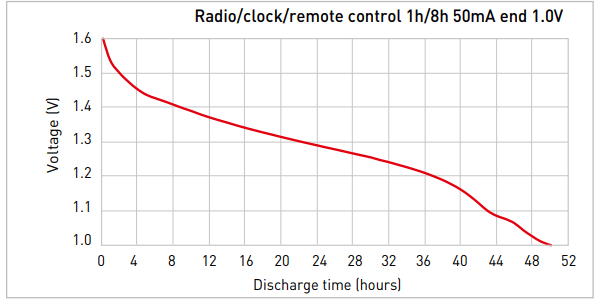
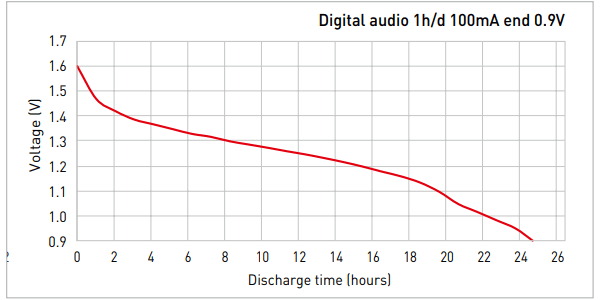
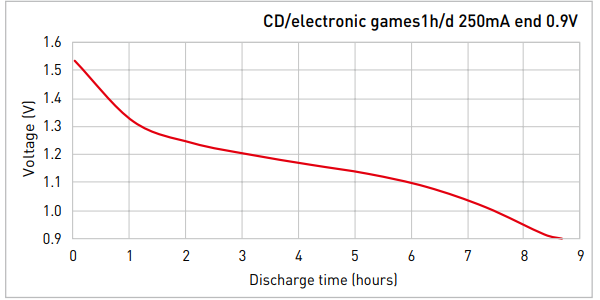
As can be seen on graphs above for 50mA current load discharge time is around 50 hours and for double current load of 100mA discharge time is around
25 hours or twice as fast compared to current load of 50mA.
For 250mA current load discharge time is around five times shorter compared to 50mA and it is around 8 hours. This discharge time is not 10 hours (t = 2500mAh / 250mA = 10 hours) as expected because at higher loads battery is not discharged so efficiently as during light loads.
Early mentoined equation is therefore good approximation for device operation time if we know current draw and if current draw is constant and does not
depend on battery voltage level which is reducing during discharge. Best results of this equation are achieved for load currents up to 100mA.
Depending on the level of the battery load current battery capacity is changed. Few examples are mentoined in table below for LR6 / AA battery.
| IEC MODE | DRAIN | CAPACITY (mAh) LR6 |
| Radio | low | 2640 |
| CD | middle | 2115 (-20%) |
| Digital camera | high | 450 (-83%) |
LTSpice AA ALKALINE BATTERY SIMULATION MODEL
Now when we learned basics about batteries it is time to get more familiar with LTspice battery simulation model.
At the end of this tutorial you can find link for LTSpice Alkaline Battery simulation model download. For simulation model alghoritm it is taken into account battery capacity variation with actual battery current load draw. Model is quite accurate for Panasonic Alkaline Battery Powerline type which can be seen on graphs below.
First graph shows battery discharge curve for load of 50mA constant current. It takes for battery to reach 1V cut-off voltage around 50 hours (180k seconds) which is almost the same as shown in graphs above from battery datasheet.
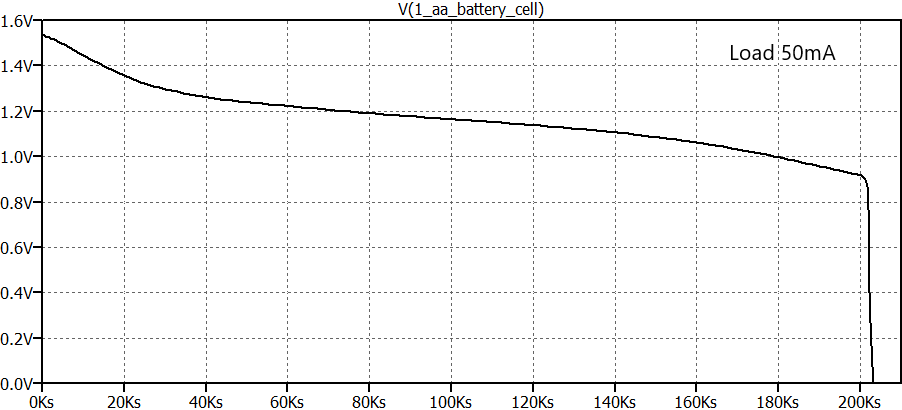
Next graph shows battery discharge during constant load of 100mA. It takes somewhat less then 25h for battery to reach cut-off voltage of 0.9V. This is also pretty close to values in battery datasheet.
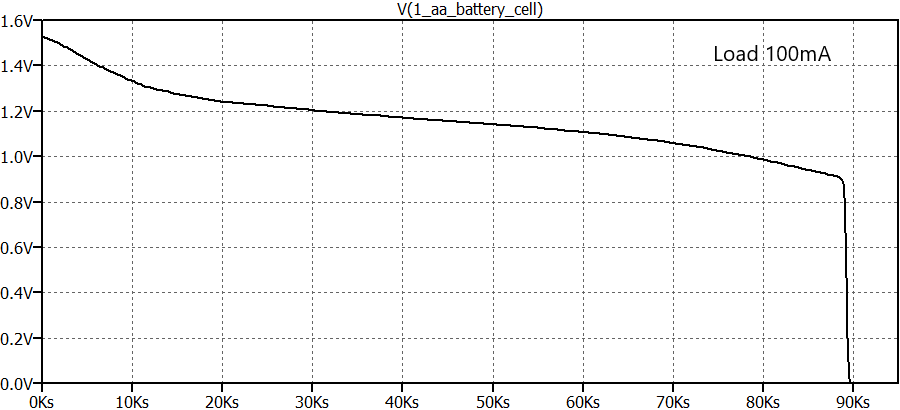
Last graph shows battery discharge for constant load of 250mA. And it takes around 8 and a half hours to discharge to 0.9V which is again really close to real value from datasheet.
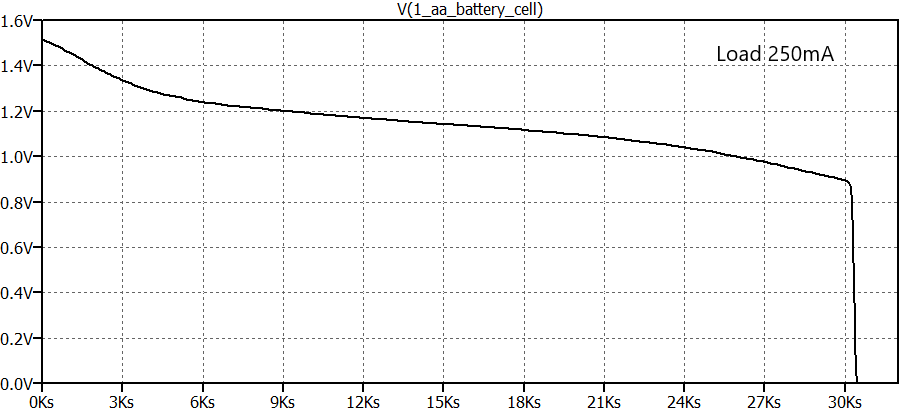
At the end we can conclude that our LTSpice battery simulation model is really good for simulation of different battery loads and discharge times. Also battery discharge profile can be used to optimise electronic circuit in order to be able to operate as long as possible while being supplied from Alkaline Batteries.
Another important thing to consider when implementing device with batteries is that batteries from different manufacturers can have different discharge curves. Also same manufacturer can have wide range of different alkaline battery types with different discharge curves. Let’s not forget about another important thing – discharge curve dependency on environmental factors – temperature and humidity. Because of that it is always suggested to check battery TDS and at the end test device with range of different batteries and choose best option.
This tutorial and simulation resources can be first step in development of your electronic device but real world test is always recommended.
LEARN MORE
More data about batteries can be found in this great Panasonic Alkaline Batteries for Professionals Handbook.
LEARN MORE
Datasheet for Duracell Alkaline battery. If you check discharge curves they are slightly different then those in tutorial.
SIMULATION MODEL
AA 1.5V Alkaline Battery Panasonic Industrial Powerline








Leave a Reply